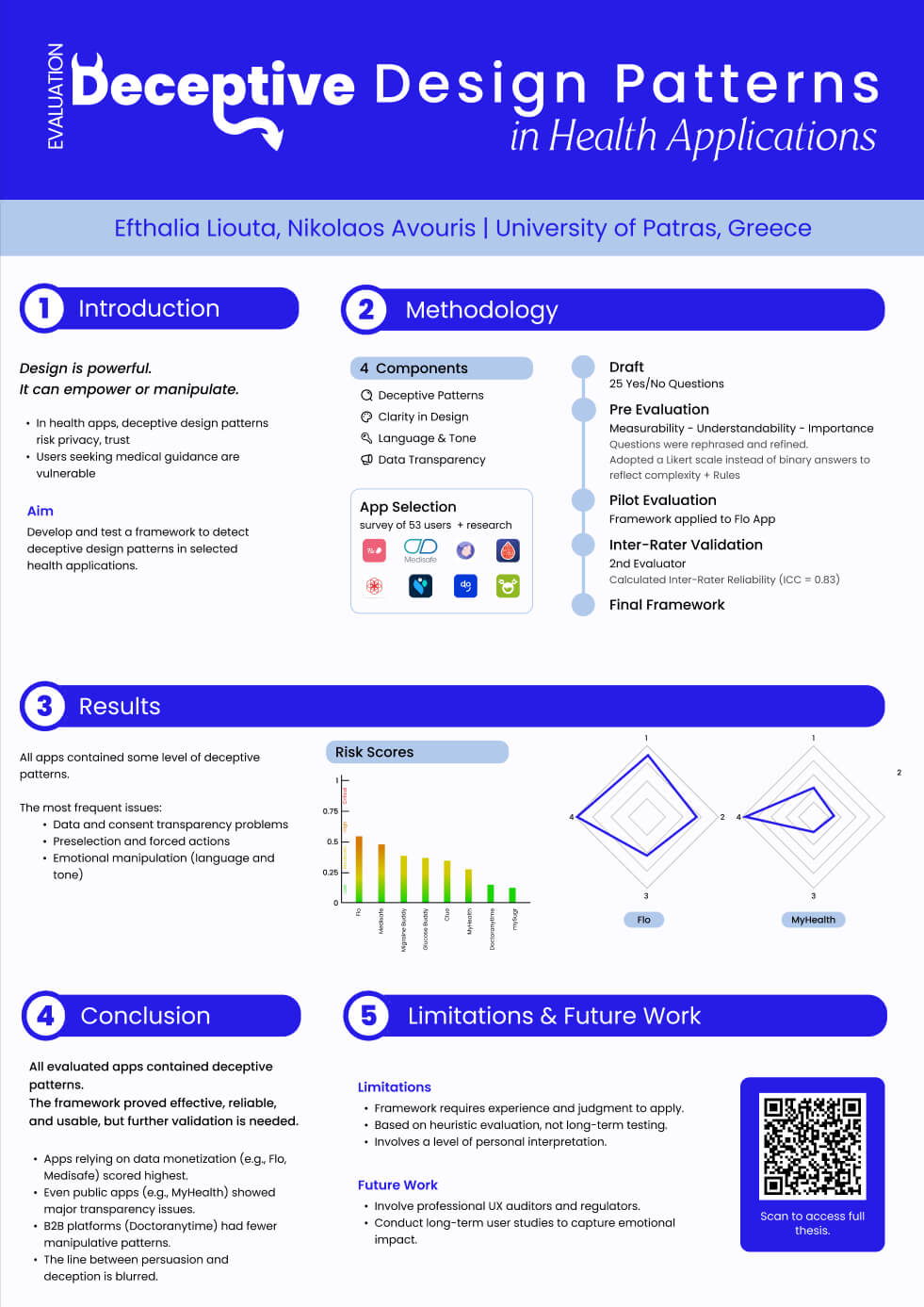This paper presents an evaluation framework designed to assess the presence of deceptive design patterns in health applications. These patterns are intended to manipulate users into making choices they might not otherwise make. They are classified based on the type of harm they can potentially inflict in various categories, like sneaking, urgency, misdirection, social proof, scarcity, and obstruction. In the context of health applications, the consequences of deceptive design are particularly serious. As they often handle sensitive medical data and are used during vulnerable moments. A manipulative design can lead to poor health decisions, increased anxiety, or even general mistrust in digital care systems. In our study, we attempted to measure the extent to which representative health-related applications contain deceptive design patterns, and how useful and understandable the proposed evaluation framework is for identifying and assessing deceptive design patterns in such applications.
All evaluated applications contained deceptive patterns to some degree. The most common issues were related to Data and Cookie Transparency. Apps using freemium or data-driven models (e.g., Flo) scored higher in deception, while B2B or less commercial apps had fewer issues. Surprisingly, public health apps also demonstrated concerns about data clarity and user consent.
The framework was found to be both understandable and practical. For further validation, future studies should involve professional UX auditors or regulatory bodies to evaluate it in diverse health contexts.
Javascript must be enabled to continue!
Evaluation of Deceptive Design Patterns in Health Applications

